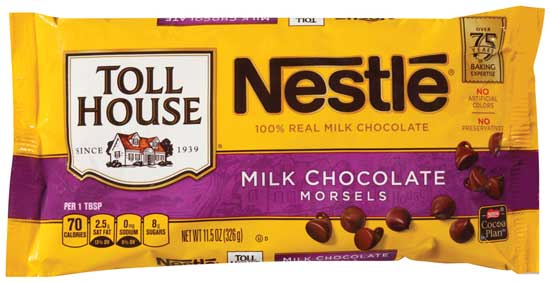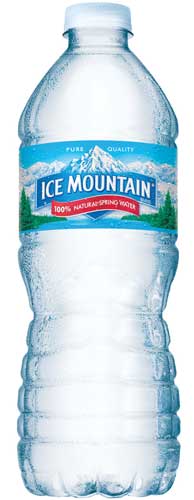Materials for Increased Packaging Sustainability
PACKAGING
Because the extracting, recycling, reusing, collecting, and regulating of raw materials vary globally, assessing the sustainability of packaging materials is multifaceted. Often, companies have internal assessments that guide sustainable material choices. “To ensure that end of life of the package is factored into material selection and design, Nestlé employs a proprietary internal life cycle analysis tool,” explains Walter Peterson, manager of packaging innovation and sustainability, Nestlé USA. “The Life Cycle Tool steers packaging material decisions to achieve the lowest environmental impact possible as well as directs packaging research needs for future material needs: for example, an assessment of the sustainability of polypropylene trays used by Nestlé and subsequent exploration of the technology available to develop a recyclable paperboard tray. A recyclable paperboard tray suitable for microwaving is not viable, yet there is a real need for an uncoated tray.” The shared value platform of Nestlé and other like-minded companies facilitates partnerships to create needed infrastructure to raise the value of packaging after product use. Nestlé is deeply involved with end-of-life material recovery, which is essential to catalyze recycling and reuse of packaging materials. As economies evolve and e-commerce grows, packaging materials need to be reassessed to ensure the most sustainable package is in use.
Paper Packaging
Paper packaging made from trees and other plants is often perceived as sustainable because the materials come from renewable sources. But paperboard used in most food packaging applications is not compostable or biodegradable as defined by European Standards. To comply with these standards, innovation and reassessment of company and consumer expectations of packaging must occur. Efforts to make paperboard more sustainable have focused on employing alternative fibers, using unbleached versus bleached virgin fibers, expanding the use of recycled paper fibers, and optimizing the use of paper fibers in paperboard and corrugated.
Alternatives to tree fibers are numerous and include crops such as kenaf and bamboo and agricultural byproducts such as sugarcane bagasse. Bagasse requires fewer chemicals to produce crisp white paper, and the length of its fiber is comparable to hardwood fibers. Although major inroads in using alternative fibers for paperboard are increasing, papermaking processes from trees are much more efficient and fine-tuned than those for alternative fibers. Byproducts and deforestation associated with harvesting trees and the use of arable land to produce alternative packaging papers make the sustainability comparison.
Solid bleached sulfate has historically been used in food packaging to achieve a crisp white background for graphics. By removing the bleaching process, the use of chemicals (including chlorine, hydrogen peroxide, and sodium dithionite) and water declines, resulting in more-sustainable paper. The unbleached brown kraft look appeals to consumers and ties in well with consumers seeking wholesome and natural ingredients.
Producing paperboard cartons from recycled paperboard requires less energy than from virgin fibers even when the energy required for collection and transport is factored in. A common recycled content structure is clay-coated newsboard, which has a gray appearance and a clay coating to provide a consistent white surface for printing. However, recycled board cannot be used in direct contact with wet food, as defined in federal and international regulations. This is largely because when paper is recycled, processing temperatures are not sufficient to sterilize recycled paper. For this reason, much of the food packaging made with recycled paper is used for secondary and tertiary packaging, as seen in corrugated boxes, folding cartons, and sleeves. Research and development professionals are exploring methods to sterilize fiber without utilizing elevated temperatures. When paperboard is used for long-term food contact, coatings are often needed to protect food, inhibit oil and grease transfer, and provide a moisture barrier. However, the end product is often a coated structure that is not recyclable. For example, if a high degree of resistance to oil/grease or moisture (in freezer and refrigerated environments) is needed, polymer-based coatings are used, and these coatings often make the paperboard not readily recyclable. Dan Ahern, director of global innovation and design at Graphic Packaging International (graphicpkg.com), describes the role that design innovation has in providing more recyclability: “Oil and grease can be controlled through the use of specialized alternative coatings coupled with design and graphics elements to deliver the desired product performance, visual appeal, and maintain product recyclability. We are refining design and manufacturing processes to remove materials that can render packages nonrecyclable.”
The reduction in carton size and optimization of secondary and tertiary packaging use occurred in the 1980s and 1990s as a measure to decrease costs and material use. A recent focus on more value chain–directed initiatives has resulted in further optimization that benefits manufacturers, distributors, and retailers. The complexities in reducing paperboard are being driven by the need to fit packages on standard distribution pallets and grocery shelves and to meet portion-size requirements. As e-commerce becomes optimized, paperboard package size and corrugated use need to be fine-tuned for this alternate distribution and to educate consumers on the recycling of corrugated and paperboard containers.
Glass and Metal
Glass and metal food packages are inherently sustainable because they can be recycled infinitely and provide exceptional oxygen and moisture barriers for food. However, glass is heavy and breakable, decreasing its sustainable distribution, collection, and sorting in recycling streams. Glass containers continue to be refined using finite element modeling and innovations in molding technologies. Additives and finesse in molding technologies have enhanced the capabilities of metal packaging. But the initial extraction of iron and bauxite for steel and aluminum cans has a heavy toll on the environment. Recycling rates of steel and aluminum are high and 95% less energy is needed to produce a can from recycled metals compared to virgin metals. Further, steel is separable magnetically within recycling centers.
Polymers
Plastic packaging helps augment shelf life and convenience of many food products, but the value of repurposing plastic packaging post-product use is low in some regions of the world. This is evident by the high quantity of plastic containers that ends up in oceans rather than being reused or recycled. Changes in international regulations on processing recycled packaging will alter the value of recycled packaging.
 Optimizing polymers has expanded beyond light-weighting containers into the realm of the whole value chain. For Nestlé, direction on sustainable polymer-based packaging comes from consumers and the required fitness for use. “Sometimes a slight increase in the polymer use in a flexible film also decreases food waste. By increasing the package wall thickness of Nestlé Toll House Morsels, this resulted in less waste of the packaged product by allowing the consumers to fold the bag and maintain product quality for future use,” says Peterson. The addition of more packaging resulted in a more sustainable package overall. The DowDuPont (dow-dupont.com) 100% polyethylene (PE) fully recyclable stand-up pouch designed to replace hard-to-recycle multilayer pouches for low-barrier applications is another example of a system approach in which distribution systems may need to be altered to allow for a shorter shelf life within low-barrier containers.
Optimizing polymers has expanded beyond light-weighting containers into the realm of the whole value chain. For Nestlé, direction on sustainable polymer-based packaging comes from consumers and the required fitness for use. “Sometimes a slight increase in the polymer use in a flexible film also decreases food waste. By increasing the package wall thickness of Nestlé Toll House Morsels, this resulted in less waste of the packaged product by allowing the consumers to fold the bag and maintain product quality for future use,” says Peterson. The addition of more packaging resulted in a more sustainable package overall. The DowDuPont (dow-dupont.com) 100% polyethylene (PE) fully recyclable stand-up pouch designed to replace hard-to-recycle multilayer pouches for low-barrier applications is another example of a system approach in which distribution systems may need to be altered to allow for a shorter shelf life within low-barrier containers.
 Single barriers and technologies that enable recycling of multilayer polymer structures will increase the post-consumer value of polymers. To preserve products, multilayer polymer barriers are often required. As the demand for more fresh foods increases, packaging must work harder to provide the required shelf life or distribution systems needed for change. Distribution system changes are difficult when manufacturing is relegated to a few sites. More often, packaging is being altered so that manufacturers can reduce the amount of preservatives contained in various foods. For example, bread with preservatives and stabilizers requires a single-layer recyclable PE bag over an optional recyclable polypropylene wrap. However, breads without preservatives require energy-intensive frozen distribution (not optimal for starch retrogradation but good to control mold growth) and a modified atmosphere package that demands a multilayer structure such as polyethylene terephthalate (PET) and ethylene vinyl alcohol (EVOH) with a PE-based seal layer. This is needed to maintain a modified atmosphere of minimal oxygen with high levels of carbon dioxide and nitrogen to inhibit mold growth. In this case, EVOH provides an additional barrier to keep carbon dioxide within the package. This multilayer polymer structure protects the bread but is not recyclable. Although EVOH compatibilizers exist to facilitate recycling of some layers, compatibilizers to facilitate easy recycling of food packaging layers of PET/EVOH do not exist. The leaching of active compounds from single-layer structures to inhibit microbial growth is an active area of research; technologies to enhance the barrier properties using glass, metal, and nanotechnology of single-layer structures are advancing.
Single barriers and technologies that enable recycling of multilayer polymer structures will increase the post-consumer value of polymers. To preserve products, multilayer polymer barriers are often required. As the demand for more fresh foods increases, packaging must work harder to provide the required shelf life or distribution systems needed for change. Distribution system changes are difficult when manufacturing is relegated to a few sites. More often, packaging is being altered so that manufacturers can reduce the amount of preservatives contained in various foods. For example, bread with preservatives and stabilizers requires a single-layer recyclable PE bag over an optional recyclable polypropylene wrap. However, breads without preservatives require energy-intensive frozen distribution (not optimal for starch retrogradation but good to control mold growth) and a modified atmosphere package that demands a multilayer structure such as polyethylene terephthalate (PET) and ethylene vinyl alcohol (EVOH) with a PE-based seal layer. This is needed to maintain a modified atmosphere of minimal oxygen with high levels of carbon dioxide and nitrogen to inhibit mold growth. In this case, EVOH provides an additional barrier to keep carbon dioxide within the package. This multilayer polymer structure protects the bread but is not recyclable. Although EVOH compatibilizers exist to facilitate recycling of some layers, compatibilizers to facilitate easy recycling of food packaging layers of PET/EVOH do not exist. The leaching of active compounds from single-layer structures to inhibit microbial growth is an active area of research; technologies to enhance the barrier properties using glass, metal, and nanotechnology of single-layer structures are advancing.
Polymers can readily be made from a multitude of substances, but few have necessary barrier properties or mechanical properties for food applications. Although bio-derived compostable polymers receive a lot of publicity, using resources to derive, collect, sort, and degrade polymers is not sustainable. Still, bio-derived recyclable polymers do hold much promise as long as the strategy does not involve using arable land for growing materials for bio-derived polymers. For example, as long as polyethylene furanoate and polytrimethylene furandicarboxylate can be derived from renewable resources such as sustainably sourced trees or agricultural waste byproducts, their value is promising.
 Claire Koelsch Sand, PhD, Contributing Editor
Claire Koelsch Sand, PhD, Contributing Editor
CEO, Packaging Technology and Research
Adjunct Professor, Michigan State Univ. and California Polytechnic State Univ.
[email protected]
